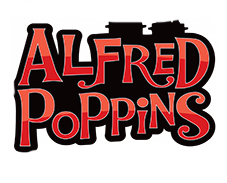Here we will cover a vast range of wood types and give a bref description of their qualities.
Alder: Poor heat output and short lasting. A low quality firewood. Produces nice charcoal that burns steady.
Apple: Great fuel that bums slow and steady when dry, with little flame, sparking or spitting. It has a pleasing scent. It is easier to cut green. Great for cooking.
Ash: Considered one of the burning wood with steady flame and good heat output. It will bum when green, but not as well as when dry. Easy to saw and split.
Beech: Similar to ash, but only burns fair when green. If it has a fault, it may shoot embers out a long way. It is easy to chop.
Birch: This has good heat output but burns quickly. The smell is also pleasant. It will burn unseasoned. Can cause gum deposits in chimney if used a lot. Rolled up pitch from bark makes a good firestarter and can be peeled from trees without damaging them.
Blackthorn: Burns slowly, with lots of heat and little smoke.
Cedar: This is a great wood that puts out a lot of lasting of heat. It produces a small flame, a nice scent, and lots of crackle and pop. Great splitting wood. Good for cooking.
Cherry: A slow burning wood with good heat output. Has a nice sent. Should be seasoned well. Slow to start.
Chestnut: A mediocre fuel that produces a small flame and weak heat output. It also shoots out ambers.
Douglas Fir: A poor fuel that produces little flame or heat.
Elder: A mediocre fuel that burns quickly without much heat output and tends to have thick acrid smoke. The Hag Goddess is known to reside in the Elder tree and burning it invites death. Probably best avoided.
Elm: A variable fuel (Dutch elm disease) with a high water content (140%) that may smoke violently and should be dried for two years for best results. You may need faster burning wood to get elm going. A large log set on the fire before bed will burn till morn. Splitting can be difficult and should be done early on.
Eucalyptus: A fast burning wood with a pleasant smell and no spitting. It is full of sap and oils when fresh and can start a chimney fire if burned unseasoned. The stringy wood fiber may be hard to split and one option is to slice it into rings and allow to season and self split. The gum from the tree produces a fresh medicinal smell on burned which may not be the best for cooking with.
Hawthorn: Good firewood. Burns hot and slow. Traditionally gathered as bundles or ‘faggots’ for burning in winter.
Hazel: An excellent fast burning fuel but tends to burn up a bit faster than most other hard woods. Allow to season.
Holly: A good firewood that will burn when green, but best if dried a year. It is fast burning with a bright flame but little heat.
Hornbeam: Burns almost as good as beech with a hot slow burning fire.
Horse Chestnut: A low quality firewood with a good flame and heating power but spits a lot.
Laburnum: Completely poisonous tree with acrid smoke that taints food and is best never used.
Larch: Crackly, scented, and fairly good for heat. It needs to be seasoned well and forms an oily soot in chimneys.
Laurel: Produces a brilliant flame.
Lilac: Thinner branches make good kindling, whilst the thicker burn well with a clear flame and a very pleasant smell
Lime: A poor quality fuel with dull flame. Good for carving though! A bit of a waste to burn it.
Maple: A good all round firewood.
Oak: Oak has a sparse flame and the smoke is acrid if not seasoned for two years after WINTER FELLING. Summer felled Oak takes YEARS to season well. Dry old oak is excellent for heat, burning slowly and steadily until whole log collapses into cigar-like ash.
Pear: Burns with good heat, good scent and no spitting. Needs to be seasoned well.
Pine species generally: (Including the dreaded Leylandii) Bums with a splendid flame, but apt to spit. Needs to be seasoned well and is another oily soot in chimney wood. Smells great and its resinous wood makes great kindling. Best used on an outdoor fire in the cold evening of a day out in the garden!
Plane: Burns pleasantly, but is apt to throw sparks if very dry.
Plum: Wood provides good heat with a nice aromatic sent.
Poplar: A terrible fuel that doesn’t burn well and produces a black choking smoke even when seasoned.
Rowan: A good firewood that burns hot and slow.
Rhododendron: Old thick and tough stems burn well.
Robinia (Acacia): Burns slowly, with good heat, but with acrid smoke. Not a problem in a stove!
Spruce: A poor firewood that burns too quickly and with too many sparks.
Sycamore: Burns with a good flame, with moderate heat. Useless green.
Sweet Chestnut: Burns when seasoned but tends to spits continuously and excessively.
Thorn: One of the best firewoods. Burns slowly, with great heat and little smoke.
Walnut: Low to good value to burning. It a nice aromatic scent.
Wellingtonia (Giant Sequoia): Poor for use as a firewood.
Willow: A poor fire wood that must be dry to use. Even when seasoned, it burns slowly, with little flame. Apt to spark.
Yew: This burns slowly, with fierce heat. The scent is pleasant. Another carving favourite.

